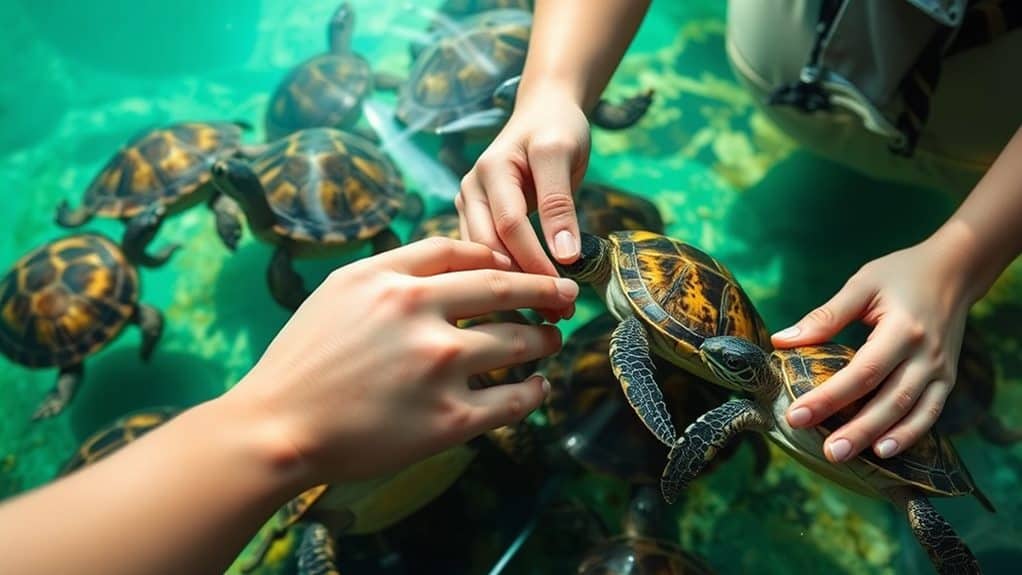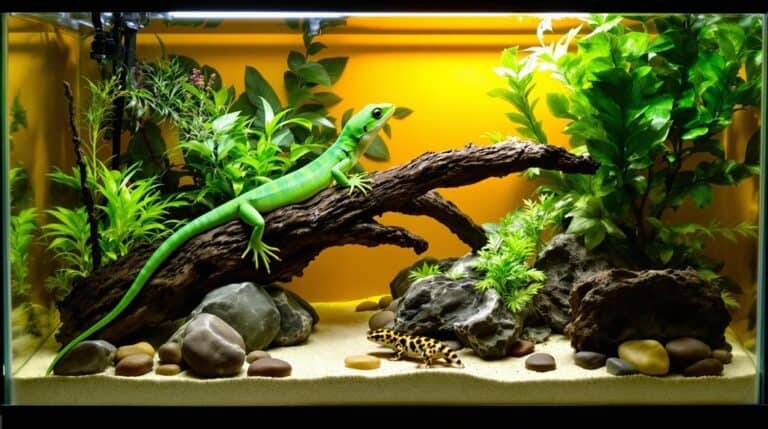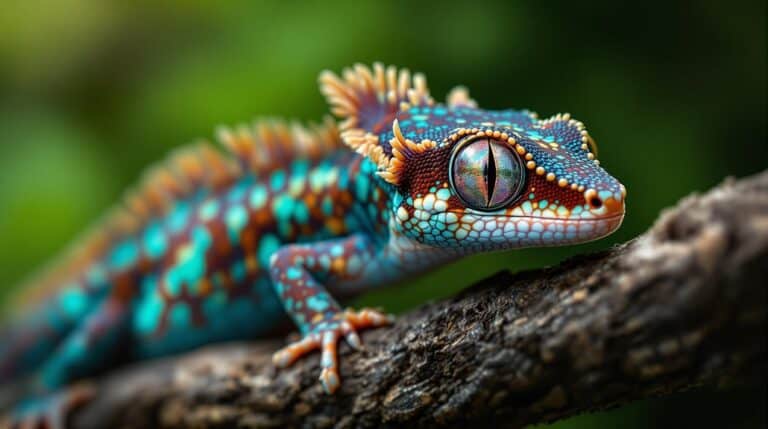Can Turtles Recognize Their Owners
Turtles have a sophisticated memory and environmental awareness that enable them to recognize their owners. They display this recognition through behaviors like enthusiastic swimming towards you during feeding times. Their recognition capabilities rely on a mix of sensory inputs including sight, sound, and smell. Regular interactions, such as feeding and handling, enhance their ability to distinguish you from others. In addition, turtles can learn to associate your presence with safety and nourishment, reinforcing this recognition over time. Exploring how these recognition skills develop could reveal intriguing insights into their cognitive processes and deepen the bond you share with your shelled companion.
Key Takeaways
- Turtles demonstrate recognition of their owners through enthusiastic swimming and greeting behaviors during feeding times.
- Regular, positive interactions, including feeding and handling, enhance turtles’ ability to recognize and bond with their caregivers.
- Sensory perceptions such as smell, sight, and hearing play crucial roles in turtles’ recognition of specific individuals.
- Consistent feeding routines and calm handling help turtles acclimate to their owners and strengthen trust.
- Out-of-tank activities expose turtles to different sensory experiences, improving their recognition skills.
Table of Contents
Turtles’ Cognitive Abilities
Turtles’ cognitive abilities are far more complex than one might initially believe. These reptiles showcase memory capabilities that extend to recognizing specific individuals and adapting to established feeding routines. It’s intriguing to note how their ability to remember and recognize isn’t just a fleeting moment but rather indicative of their long-term memory prowess.
Research into turtles’ cognitive functions reveals that their environmental awareness is quite sophisticated. They utilize color differentiation to navigate and identify caregivers, which is essential for their survival and well-being. This skill set isn’t merely about survival instincts; it’s a refined adaptation to their environments, showing a level of learning and memory that we often reserve for more traditionally acknowledged intelligent animals. This ability to distinguish and respond to specific stimuli suggests that turtles possess a level of intelligence and adaptability that is often underestimated. Interestingly, their advanced sensory capabilities, such as their visual acuity and olfactory senses, also play a role in explaining certain behaviors like why turtles shed tears. While often misconstrued as an emotional response, this phenomenon is primarily a biological adaptation to excrete excess salt or protect their eyes, further underscoring their remarkable evolutionary traits.
Moreover, turtles’ responses during interactions are mainly physiological. They recognize and react to their caregivers through learned associations, mainly linked with positive reinforcement. This learning capability is essential, as it underpins their recognition processes. Such findings underscore the turtles’ ability not only to learn from but also to adapt to their interactions with humans, enhancing both their safety and that of their environment by fostering a more harmonious coexistence.
Signs of Human Recognition

Building on their demonstrated cognitive abilities, turtles also exhibit clear signs of human recognition. As a turtle owner, you might notice your pet turtle swimming enthusiastically towards you, a behavior rooted not just in anticipation of food but also in the recognition of your presence. This response is particularly pronounced at feeding times, a clear indicator of how turtles recognize and react to their caregivers.
Through consistent interaction, such as regular feeding and gentle handling, pet turtles gradually enhance their ability to identify you. They utilize their senses—smell, sight, and hearing—to distinguish your unique characteristics from others. This sensory recognition supports the development of trust and comfort, which are critical in nurturing a positive human-turtle relationship.
Moreover, individual experiences play a significant role in how intensely a turtle displays recognition behaviors. Some turtles might follow their owners with their eyes or engage in affectionate gestures like head and neck rubbing, suggesting a deeper bond and comfort level with their human. These behaviors underscore the capacity of turtles to not only recognize but also show affinity towards their owners, enriching the lives of those dedicated to their care.
Interaction and Bonding Methods

To effectively bond with your turtle, employing consistent interaction techniques is essential. Understanding how turtles know and recognize their owners through consistent and positive interactions can deepen the bond you share. Here’s how you can enhance your bonding sessions:
- Consistent Feeding: Regularly feed your turtle at the same time each day. This routine helps your turtle associate your presence with positive experiences, reinforcing their ability to recognize you.
- Engaging Play: Introduce supervised playtime outside their usual habitat. Activities that allow your turtle to explore safely can build trust and help them feel secure with you.
- Calm Handling: When interacting with your turtle, use gradual movements. Calm and gentle handling reassures your turtle, making them feel safe and more likely to approach you.
- Voice Interaction: Speak to your turtle during interactions; they can become familiar with your voice, which aids in recognition and bonding.
Sensory Perception in Turtles

Understanding the sensory capabilities of turtles offers fascinating insights into how they perceive their surroundings and recognize their caretakers. Turtles’ sensory awareness is keenly developed to help them navigate their environment and form bonds with their owners. Let’s explore how each sense contributes to this recognition process.
| Sense | Function in Recognition | Details |
|---|---|---|
| Smell | Primary identifier | Turtles can differentiate unique scents, recognizing owners. |
| Vision | Visual confirmation | They identify owners by sight, aided by regular interactions. |
| Hearing | Auditory cues | Turtles recognize familiar voices and sounds of caregivers. |
In multi-person households, the recognition process might take longer since turtles need time to familiarize themselves with various scents and voices. This fact underscores the importance of consistent engagement. Regular out-of-tank time greatly enhances turtles’ sensory experiences, improving their ability to visually recognize and respond to their owners. This consistent interaction not only strengthens their sense of smell but also reinforces the auditory cues associated with specific individuals, thereby deepening the bond between turtle and owner.
Behavioral Responses to Owners

Recognizing their owners, turtles often display distinct behavioral responses that can be observed during regular interactions. When turtles get attached, they start to associate their caretaker’s presence with safety and sustenance, showcasing a unique awareness of their caretaker.
Here are several key behavioral responses you might notice if your turtle recognizes you:
- Swimming Towards the Owner: This action signifies recognition and is typically seen during feeding times or when the owner approaches the habitat.
- Following with Eyes: Turtles may track their owner’s movements around the room, indicating an awareness and interest in their surroundings.
- Greeting Behaviors: Actions like head bobbing or neck stretching upon seeing their owner can be interpreted as greeting behaviors, reflecting trust and comfort.
- Calm Interactions: Turtles exhibiting less retraction into their shells and more willingness to be handled or be in close proximity without signs of stress.
These responses emerge from routine interactions that reinforce their recognition skills. It’s essential to maintain regular, calm interactions to strengthen this bond. As turtles utilize their senses to navigate their environment, consistent, positive encounters with their owner deepen their sense of security and attachment.
Enhancing Turtle Recognition Skills

Enhancing your turtle’s ability to recognize you involves consistent, tailored interactions that capitalize on their natural behaviors and senses. By integrating structured activities and routines, you’re not just caring for your turtle; you’re also teaching them to associate your presence with safety and nourishment.
Consistent interactions are essential. Regularly scheduled feeding times and gentle handling sessions help turtles recognize and acclimate to your scent and voice. This routine forms a bond, reinforcing their recognition skills. A calm environment plays a vital role here, allowing your turtle to feel secure and more receptive to learning.
Moreover, incorporating visual cues within their habitat—like distinct, colorful decorations or specific gestures during feeding times—can greatly aid in this process. These cues serve as additional markers that help turtles distinguish you from others.
To enhance these recognition skills further, engage in out-of-tank activities that expose your turtle to different aspects of your presence, such as your unique smell and the sound of your voice. Offering special treats during these interactions can create positive associations with your presence, making these recognition moments both rewarding and enjoyable for your turtle.
Conclusion
To sum up, while turtles may not recognize their owners in the same way dogs or cats might, subtle behavioral cues suggest a form of recognition. Studies indicate that with consistent interaction—about 15 minutes daily—turtles can start to show preferential behavior towards familiar humans. Enhancing these skills hinges on understanding their unique sensory capacities and patient, regular engagement. This nuanced interaction underscores the complexity of their cognitive abilities, making every small sign of recognition truly significant.







